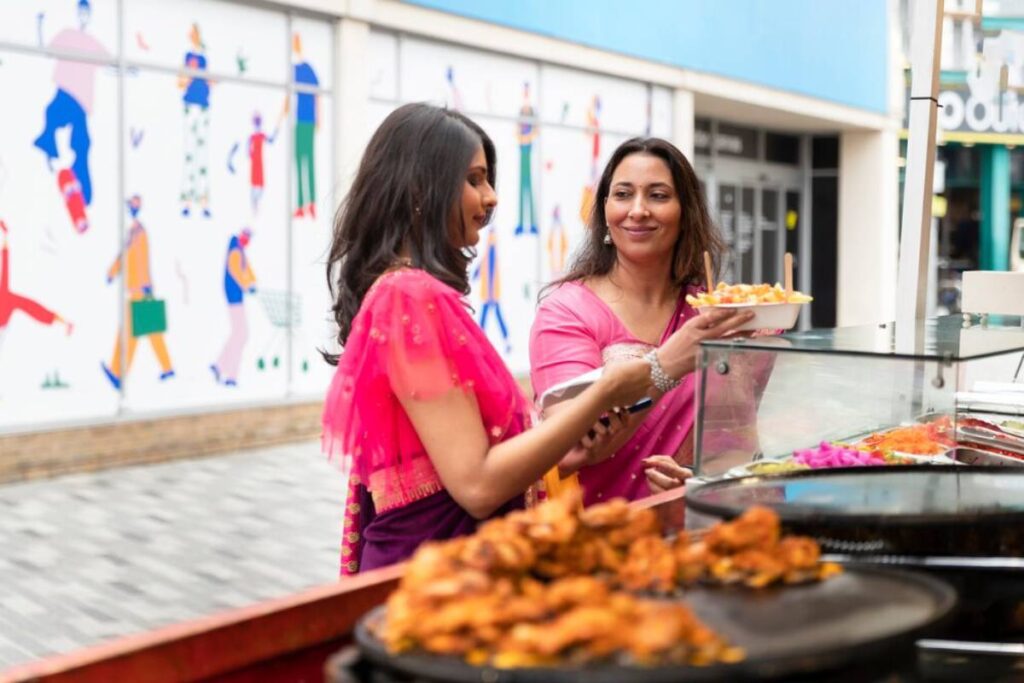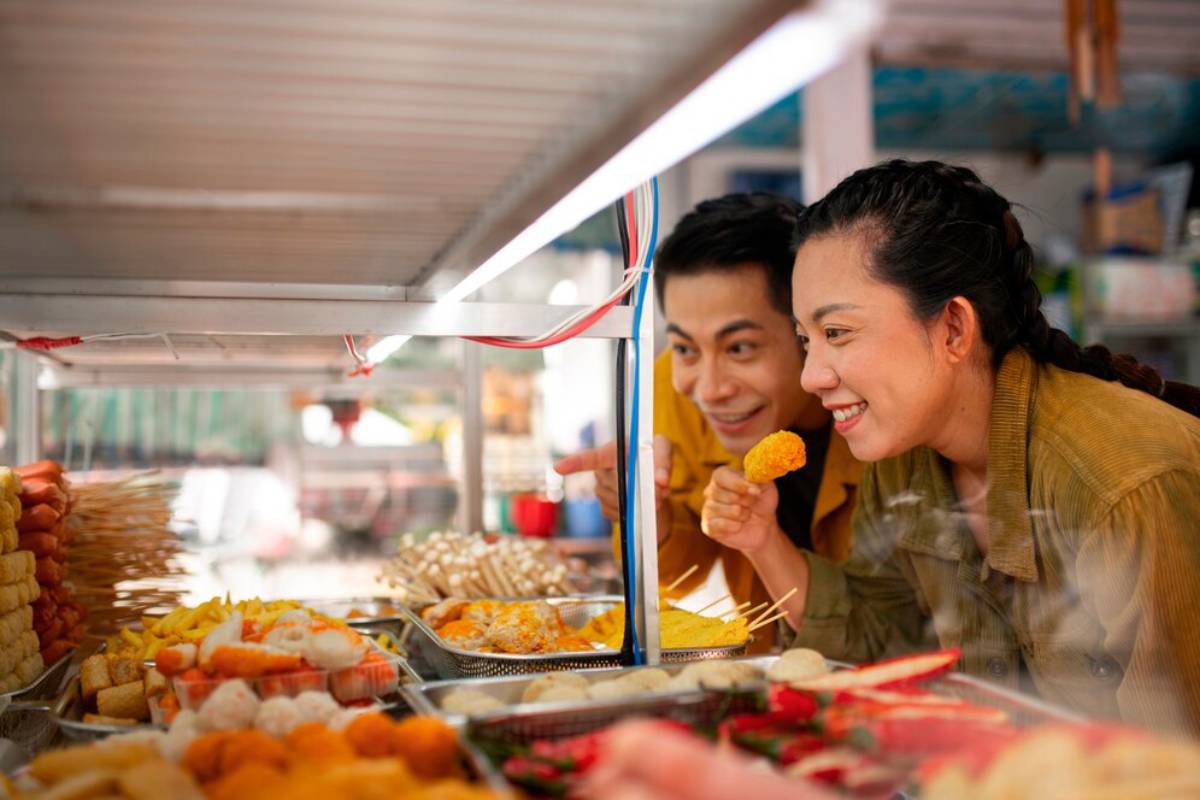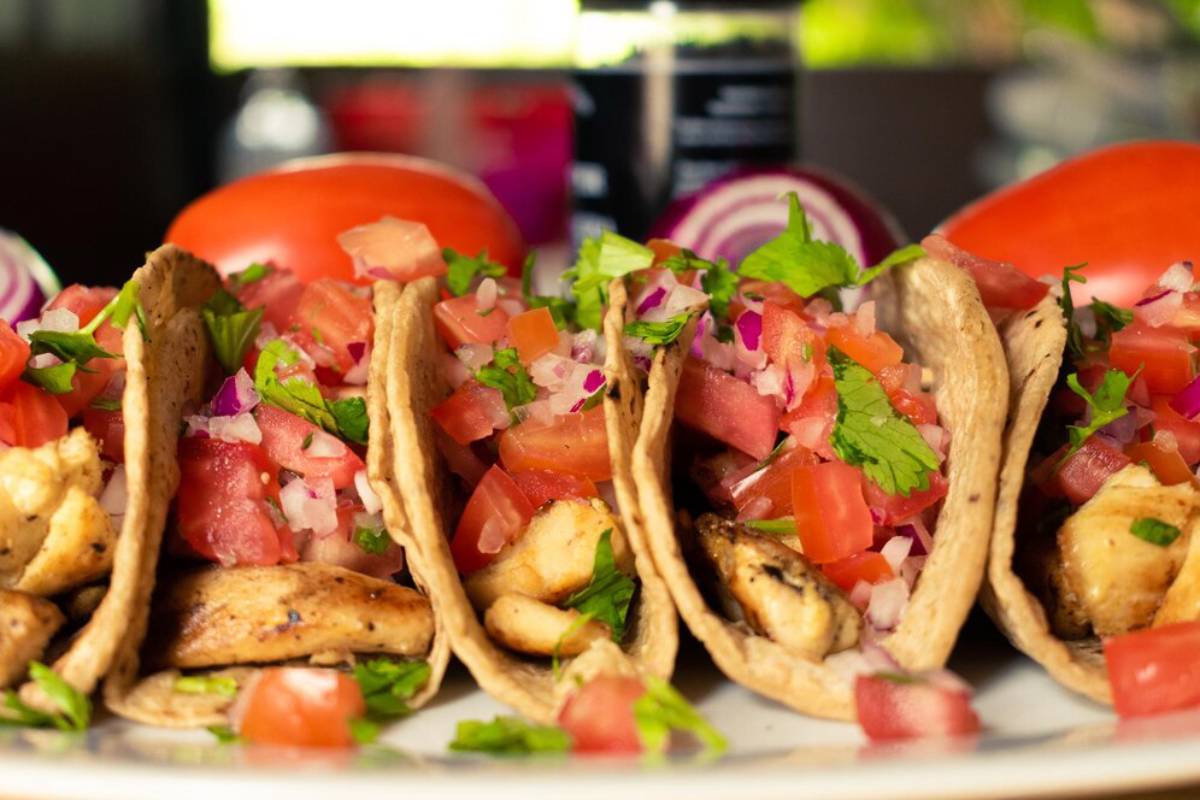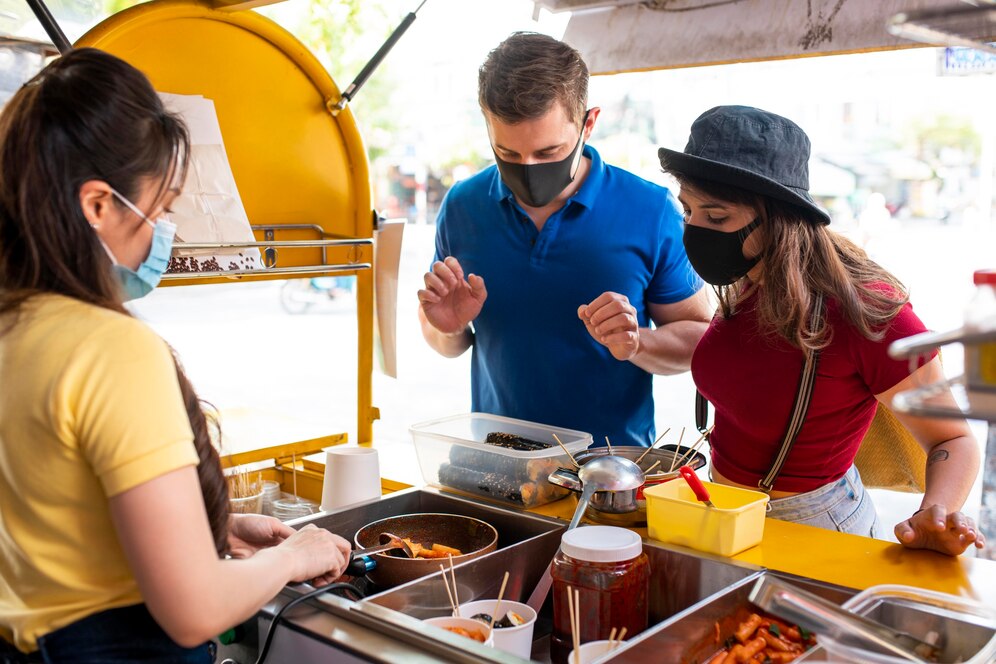The Food Blog

Street Food Culture: Why It Reflects a Nation’s Identity
From Bangkok’s sizzling woks to Istanbul’s simit carts and Mexico City’s taco stands, street food culture is a vibrant, sensory gateway into the heart of a nation. These humble dishes—often cooked and served on pavements, in alleys, or from colourful stalls—carry stories, traditions, and flavours that speak volumes about a country’s history, values, and people.
For travellers and food lovers alike, exploring global street cuisine is more than just a culinary adventure. It’s a form of cultural immersion. Every bite tells a story of migration, colonisation, celebration, or resilience. In many cases, street food is where tradition and innovation collide—creating edible expressions of national identity.
In this blog, we explore how cultural food identity is shaped, preserved, and celebrated through the delicious world of street food. We’ll take a global tour of standout examples, examine the socio-political layers beneath these dishes, and understand why street food deserves its place not just on your plate—but in your passport too.
What Is Street Food Culture?
Street food culture refers to the informal system of preparing and selling ready-to-eat food and drink in public spaces—usually at modest prices and often from carts, stalls, or portable setups. While the specifics differ by country, the core values are consistent: accessibility, authenticity, and flavour.
Key Characteristics:
- Prepared in front of customers
- Uses local, seasonal ingredients
- Offers quick, affordable meals
- Is deeply rooted in community and place
Street food is frequently a family tradition passed down through generations, preserving old recipes and local methods in a rapidly globalising world.
Why Street Food Reflects National Identity
1. Historical Influence
Many street food dishes are the result of historical blending—where colonisation, migration, and trade brought new ingredients or techniques.
- Vietnam’s bánh mì: A product of French colonisation combined with local fillings.
- Indian samosas: Introduced via Central Asia, now adapted regionally across the subcontinent.
- Tacos al pastor: Influenced by Lebanese shawarma brought to Mexico.
These hybrids reveal layers of cultural adaptation and resilience—key components of national stories.
2. Regional Pride and Diversity
Within one country, street food varies dramatically by region. This diversity reveals the complexity of a nation’s identity beyond capital cities or tourist areas.
- In Thailand, northern khao soi differs greatly from southern massaman curry.
- China offers everything from Xi’an’s lamb-filled buns to Chengdu’s fiery skewers.
- Italy is known for pasta, but Sicilian arancini and Neapolitan fried pizza are street icons in their own right.
Global street cuisine often serves as a shorthand for understanding regional economies, climates, and cultural values.
3. Economic Realities and Innovation
Street food is often born out of necessity. For many, it’s a livelihood and a platform for upward mobility. Vendors innovate within their constraints, creating dishes that are both delicious and affordable.
- In Nigeria, suya (spicy meat skewers) feeds city crowds on a budget.
- In Peru, anticuchos are made from marinated beef heart—a nod to Indigenous resourcefulness.
- In the Philippines, balut (fermented duck egg) is both snack and symbol of working-class cuisine.
These foods reflect the ingenuity and grit of everyday people—making them as politically and economically significant as they are tasty.

4. Cultural Ritual and Community
Street food isn’t just about feeding people—it’s about gathering them. These eating environments foster communal interaction and represent local rhythm, tradition, and pace.
- Japan’s yatai stalls serve ramen and yakitori in a shared, almost sacred atmosphere.
- Morocco’s night markets transform squares into aromatic stages for performance, prayer, and plate-sharing.
- Senegal’s tea ceremonies, often conducted in public, are as much social ritual as beverage preparation.
Cultural food identity is preserved not only in recipes, but in rituals and relationships around food.
Street Food Around the World: A Culinary Tour
Let’s take a closer look at iconic street foods that offer deep insight into their cultures.
1. Bangkok, Thailand – Pad Thai and Beyond
Cultural Snapshot: Street food is an everyday staple in Bangkok. Pad Thai, papaya salad, grilled meats, and coconut pancakes are not just popular—they’re considered essential.
Why It Reflects Thai Identity:
- Balances sweet, sour, salty, and spicy—just like Thai philosophy
- Celebrates fresh herbs and local ingredients
- Connects urban life with agricultural roots

2. Mexico City, Mexico – Tacos al Pastor
What to Expect: Pork slow-roasted on a spit, shaved onto corn tortillas, topped with pineapple and onion.
Why It Matters:
- Blend of Indigenous and Middle Eastern culinary influence
- Tacos are deeply embedded in social life
- Shows how colonial legacies and immigration shaped Mexican cuisine
3. Hanoi, Vietnam – Pho and Bánh Mì
Signature Street Foods:
- Pho: A beef noodle soup with French-Vietnamese roots
- Bánh mì: A crusty baguette sandwich with pate, pork, and pickled vegetables
Cultural Insight:
- Fusion of East and West
- Symbolises adaptability and national pride post-colonialism
4. Istanbul, Turkey – Simit and Kumpir
Street Staples:
- Simit: A sesame-crusted bread ring sold by roving vendors
- Kumpir: Baked potatoes filled with endless toppings
Cultural Relevance:
- Reflects Ottoman street food tradition
- Bridges Europe and Asia, just like the city itself
5. Lagos, Nigeria – Suya and Akara
Popular Picks:
- Suya: Spiced meat skewers sold at roadside grills
- Akara: Deep-fried bean cakes served for breakfast
What It Says About Nigeria:
- Celebrates spice and smoky flavours
- Demonstrates resourceful use of local legumes and protein
Challenges and Preservation of Street Food Culture
While street food culture thrives in many places, it also faces threats:

A. Urban Development
City clean-ups often target street vendors, displacing long-standing food traditions.
B. Globalisation
Chain restaurants and homogenised menus threaten the uniqueness of local fare.
C. Health and Hygiene Regulation
Though important, overly strict enforcement without support for vendors can destroy livelihoods.
D. Cultural Appropriation
Popular dishes sometimes get repackaged and profit-driven abroad, stripping them of context and connection.
Solution: Support local vendors, celebrate authenticity, and understand the stories behind the street foods you love.
Tips for Experiencing Global Street Cuisine Respectfully
1. Do Your Research
Learn about the origins of dishes and etiquette in the country you’re visiting.
2. Support Long-Standing Vendors
They often carry generational knowledge and contribute deeply to the local food ecosystem.
3. Be Patient and Curious
Ask questions. Take your time. Observe how locals order and eat.
4. Avoid Wasting Food
Try small portions first. Many vendors serve sample sizes or share plates.
5. Photograph Mindfully
Always ask permission before snapping photos of people or their stalls.
Eating as Cultural Exploration
Street food is not a trend—it’s a living expression of identity, history, and community. When you travel with your tastebuds, you learn more than recipes; you absorb values, struggles, and pride. Through global street cuisine, the world becomes more accessible, more human—and infinitely more flavourful.
Take action today: Whether at home or abroad, seek out the local vendors, taste unfamiliar bites, and appreciate the deep roots beneath every dish. In doing so, you support not just food, but the cultural food identity that binds communities and nations alike.









